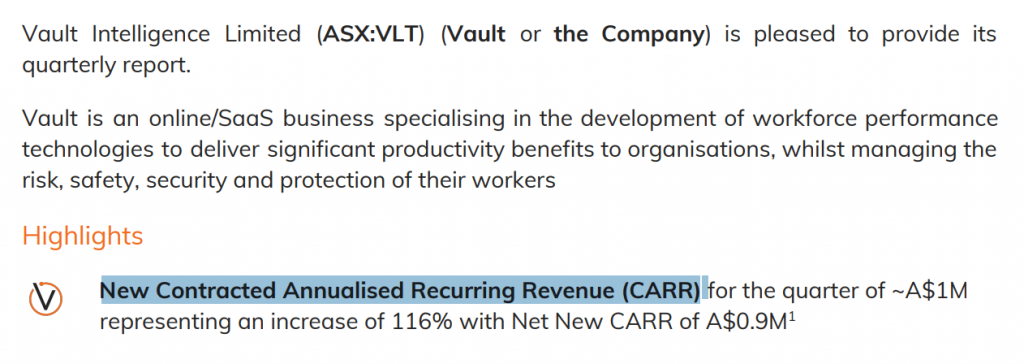One of the easiest ways investors can hurt themselves is by not understanding the difference between recurring revenue, annualised recurring revenue (ARR) and contracted annualised recurring revenue (CARR).
The most important thing to know is that all three metrics are calculated, not statutory metrics, so it is quite possible that an auditor has not confirmed them.
The most conservative kind is recurring revenue. For example, in the Energy One (ASX:EOL) report it says that nearly 70% of revenue is recurring, as you can see below (from the FY2019 annual report):

Now, if we conservatively assume that means 67%, then we can calculate recurring revenue based on past revenue, shown below, from the audited FY 2019 accounts:
Therefore, we can calculate recurring revenue to be just under $10.5 million.
Secondly we have Annualised Recurring Revenue (ARR), which is (usually) calculated as the recurring revenue in the last month, times twelve. Most companies that present ARR will do so in their annual report, although there is always a risk the figure is not audited, as it does not form part of the official accounts.
You can see what I mean below, where Volpara reports:

Finally, we have contracted annualised recurring revenue (CARR) which is (presumably) the value of a multiyear contract divided on a per year basis. That means this revenue has not been earned yet, but is forecast to be earned in the future, assuming obligations under an unarticulated contract can be satisfied and the other party can be relied upon to fulfil their side of the bargain. Unlike ARR, it is not based on the monthly amount they have already begun paying.

As you can see, recurring revenue, ARR and CARR are very different since they reflect what has already happened, the current run rate, and a future forecast, respectively. When a company is reporting ARR rather than (past) recurring revenue, it is usually because they are growing fast and want to report the more up to date number.
But you have to ask why a company would report CARR rather than ARR, which is fairly standard for software stock.